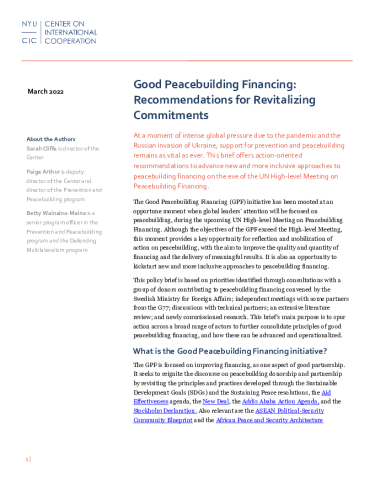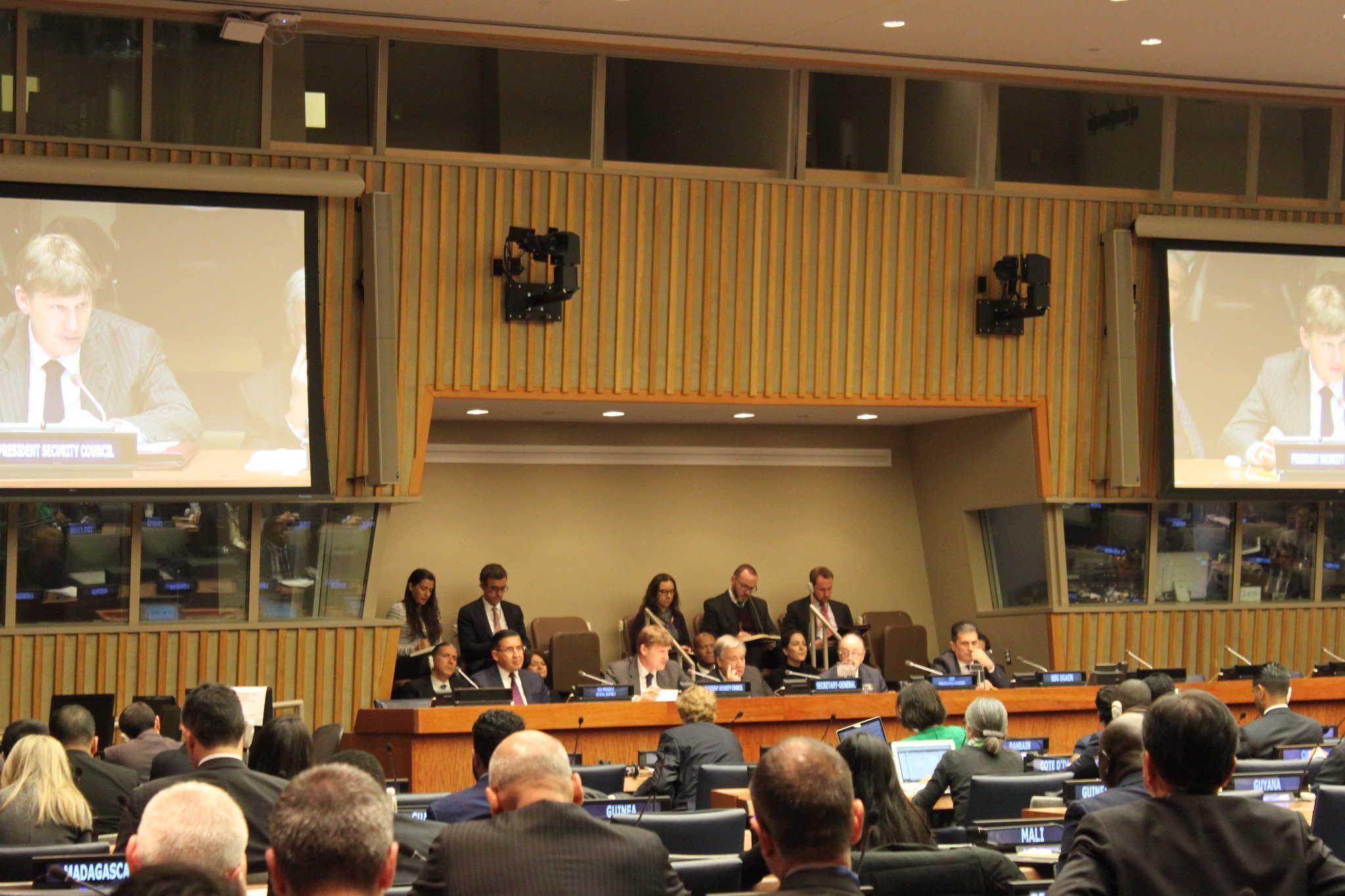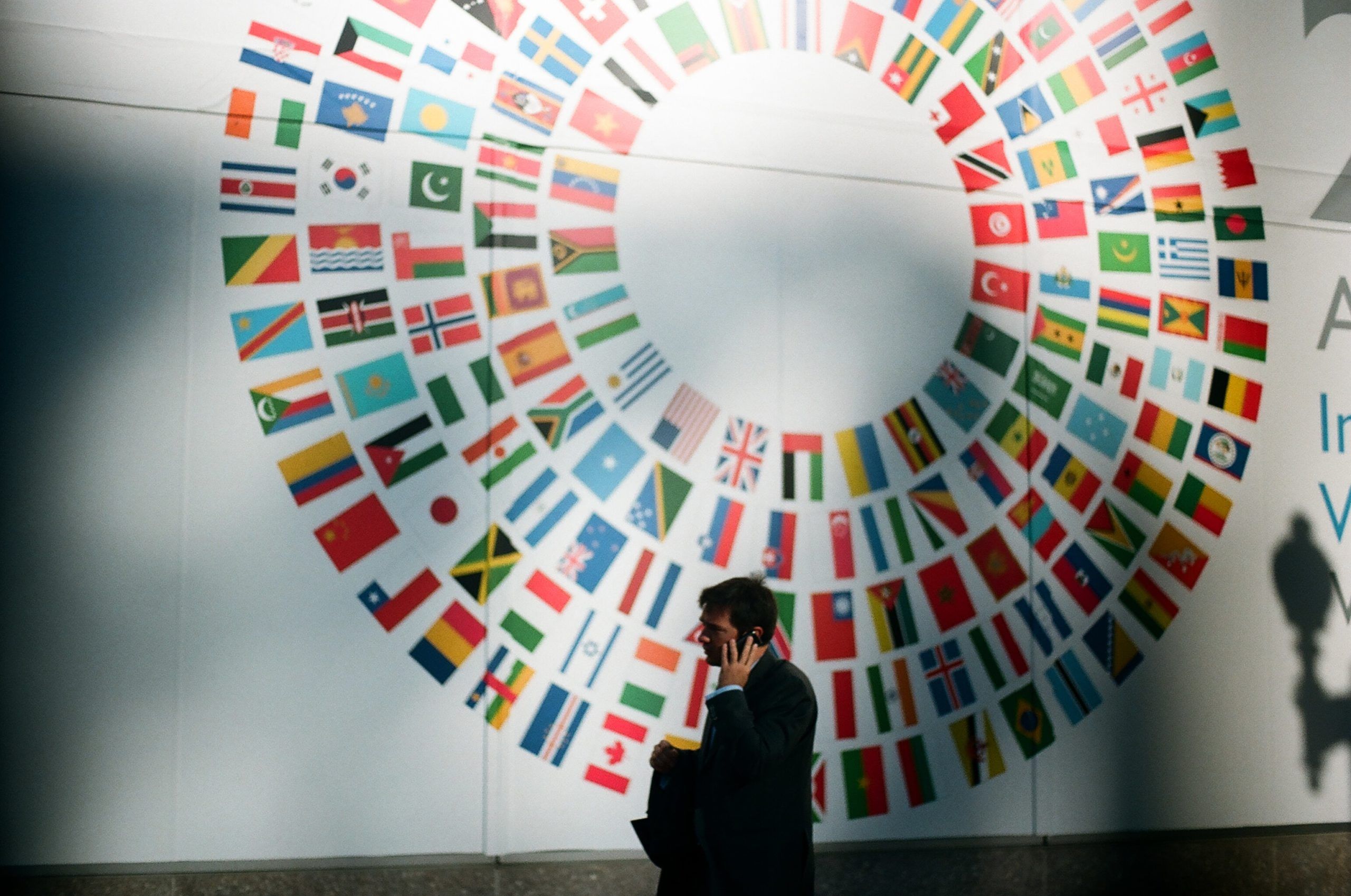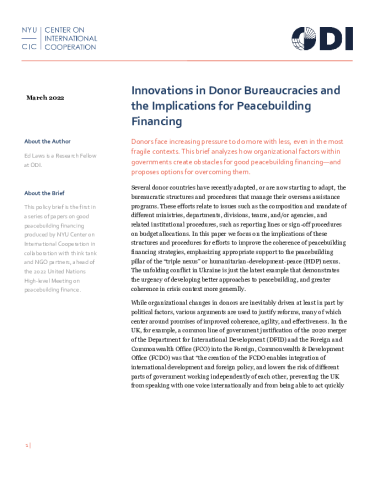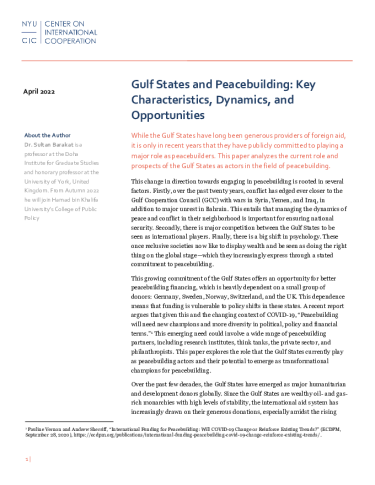In 2020 and 2021, peacebuilding funding discussions focused on community led initiatives gained renewed momentum from a ripple effect of global movements focused on equality and decolonization. In response, donors initiated reviews and made commitments to increase local financing in quantity and to improve financing quality by shifting power and inclusion in grantmaking processes to communities being supported and impacted by the funding.
This renewed momentum and focus on more equitable and accessible funding was also prominent during the 2020 United Nations (UN) Peacebuilding Architecture Review (PBAR) process. As an outcome of the PBAR process, the upcoming UN High-level Meeting of the General Assembly on Financing for Peacebuilding, on April 27, 2022, is an opportunity to build on this momentum and progress towards more accessible and responsive funding models for community-based peacebuilders. CIC’s timely launch of the Peacebuilding Architecture Review: Matrix of Recommendations this month allows member states to revisit and address critical and substantial recommendations made during the PBAR process.
Local peacebuilding and international donors: mismatched expectations and mistrust
For instance, as part of the review, the UN’s Peacebuilding Support Office (PBSO) invited the Life & Peace Institute (LPI) to convene regional consultations on the Horn of Africa and African Great Lakes region on peacebuilding and sustaining peace. These consultations highlighted a lack of trust between donors and communities apparent in funding processes. For example, prominent funding models’ onerous and bureaucratic requirements are often explained as a response to donors’ fear that funds will be misspent, siphoned off, blatantly stolen, and potentially ending up in the wrong hands. This fear lingers despite widespread recognition of the deep motivation and personal drive underlying peacebuilders’ work and the fact that fraud is the anomaly, not the norm. Similarly, community-based peacebuilders are equally skeptical of internationally led peacebuilding initiatives, and they believe that “most financing is channeled to UN actors themselves, rather than local civil society.”
Recognizing that it is unlikely that multilateral and bilateral funding mechanisms will be radically rearranged in the short-term, LPI made a series of recommendations, based on the PBAR consultations, that are included in CIC’s Matrix of Recommendations. The recommendations take seriously community calls for more inclusion in funding processes and project design, as well as for the UN “to take direction from grassroots civil society actors on the direction of funding” and begin to address community frustrations with funding levels and “layers of bureaucracy.” These recommendations emanated from a shared understanding of the critical importance of locally led peacebuilding for sustaining peace.
How can the PBF (and other funds) better support local peacebuilding?
Like other multilateral, bilateral, and private donors, the UN Peacebuilding Fund (PBF) recognizes the importance of partnerships with civil society and community-based organizations. The PBF’s 2020–2024 strategy explicitly states a commitment to “to expand partnerships with civil society organizations and explore new avenues to make funding available for community-based organizations.” However, our consultations suggested that in order to achieve this commitment there are several processes and areas the PBF can improve on to increase trust and build more equitable funding relationships in support of expanded partnerships with civil society. These lessons can also be useful for other funding mechanisms.
More direct funding to civil society organizations
The PBF primarily funds civil society through its Gender and Youth Promotion Initiative (GYPI). GYPI is a mechanism that can provide direct funding to civil society organisations. In 2021, the GYPI distributed a total of $51.5 million (approximately 25 percent of total funding provided to the PBF in 2021). Of this, $14.2 million (28 percent) was allocated to 14 civil society organizations.
This constitutes progress in funding civil society since 2016 and meets the current PBF strategy for 25 percent of funds to go to civil society organizations. However, further progress can be made to increase this percentage to civil society and to ensure the funds allocated directly to civil society organizations (versus receiving funds as a sub-grantee). This will allow local and national actors to take a lead in designing, implementing, and evaluating efforts in their own contexts, and be a tangible recognition of their out-sized contributions to sustainable peace.
Innovation in sub-granting through international non-governmental organizations (INGOs)
While the PBF is not structured to provide small and micro grants, innovative partnership with INGOs that pilot nimble funding mechanisms—like one with Mercy Corps in Liptako-Gourma region—provide an increase in opportunities for community-based organizations to receive grant amounts that are appropriate for their actions and timelines.
More innovation toward local peacebuilding support funds or partnerships with INGOs that are responsive, accessible, and have inclusive funding mechanisms for the communities they aim to serve, are welcome developments that will build stronger relationship between donors and civil society, and donors and community-based organizations. Key consideration should be given to the partnership modalities and management practices INGOs use if they are to play this intermediary role.
Develop appropriate grant timelines
Grant timelines need to be appropriate for the type of organization, activities, and funding goals. For many, 18-month grant periods fail to provide the adequate time frames for high-quality and meaningful peacebuilding work considering the complex contexts where the work is conducted. The PBF’s Peacebuilding and Recovery Facility has already increased project grant periods to at least 36 months (and up to 48 months) for all eligible countries. Similar adjustments signal a longer-term commitment and trust in the organization’s being funded, as well as respond to peacebuilding realities.
Revise eligibility criteria
The GYPI’s current eligibility criteria—such as requiring annual budgets over a specified amount, having proof of previous multilateral funding, and having multiple years of audited statements—are exclusionary. GYPI is not the only fund within the UN or elsewhere with similarly onerous eligibility criteria. These requirements create a barrier to entry that many civil society and community-based organizations are unable to overcome and effectively create an “elite” of organizations able to access funding. Revising eligibility criteria is a critical step to genuinely increasing inclusion and accessibility.
____
While LPI tailored these recommendations to the PBF, the themes of longer-term, accessible, and direct funding also apply to multilateral, bilateral, and private donors. The High-level Meeting on Financing for Peacebuilding provides an opportunity to consider how funding mechanisms can continue to adapt to allow civil society to be actively involved as equal partners. Efforts to provide more direct funding to civil society through current mechanisms and pilot innovative accessible small grant funds are necessary steps towards more meaningful engagement between donors, civil society, and communities. Incorporating these recommendations into funding processes will begin addressing the inequitable reality of the current peacebuilding financing system and supporting shared goals of sustainable peace.
